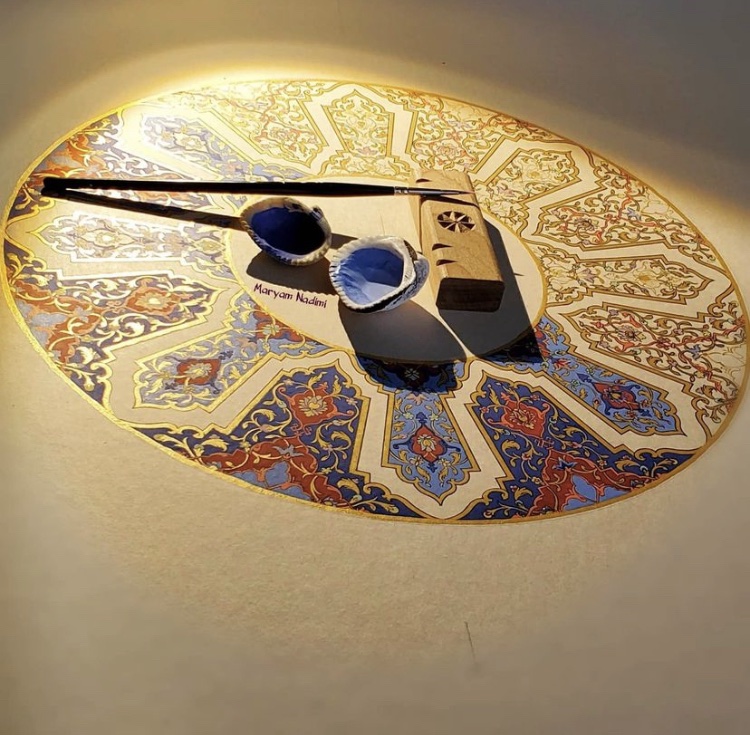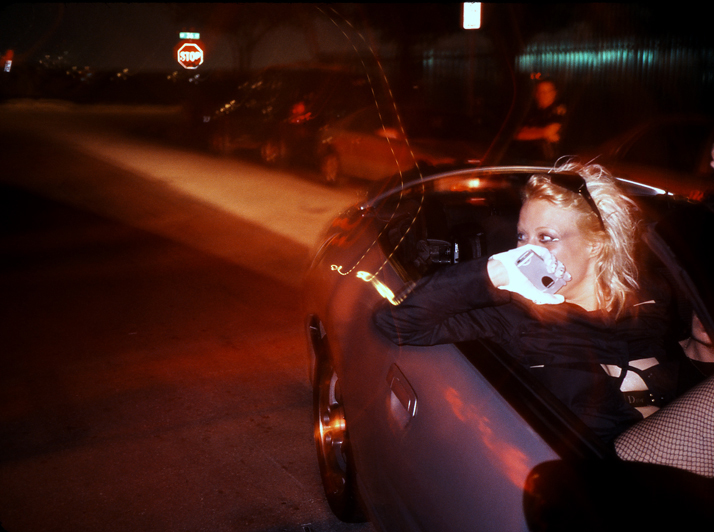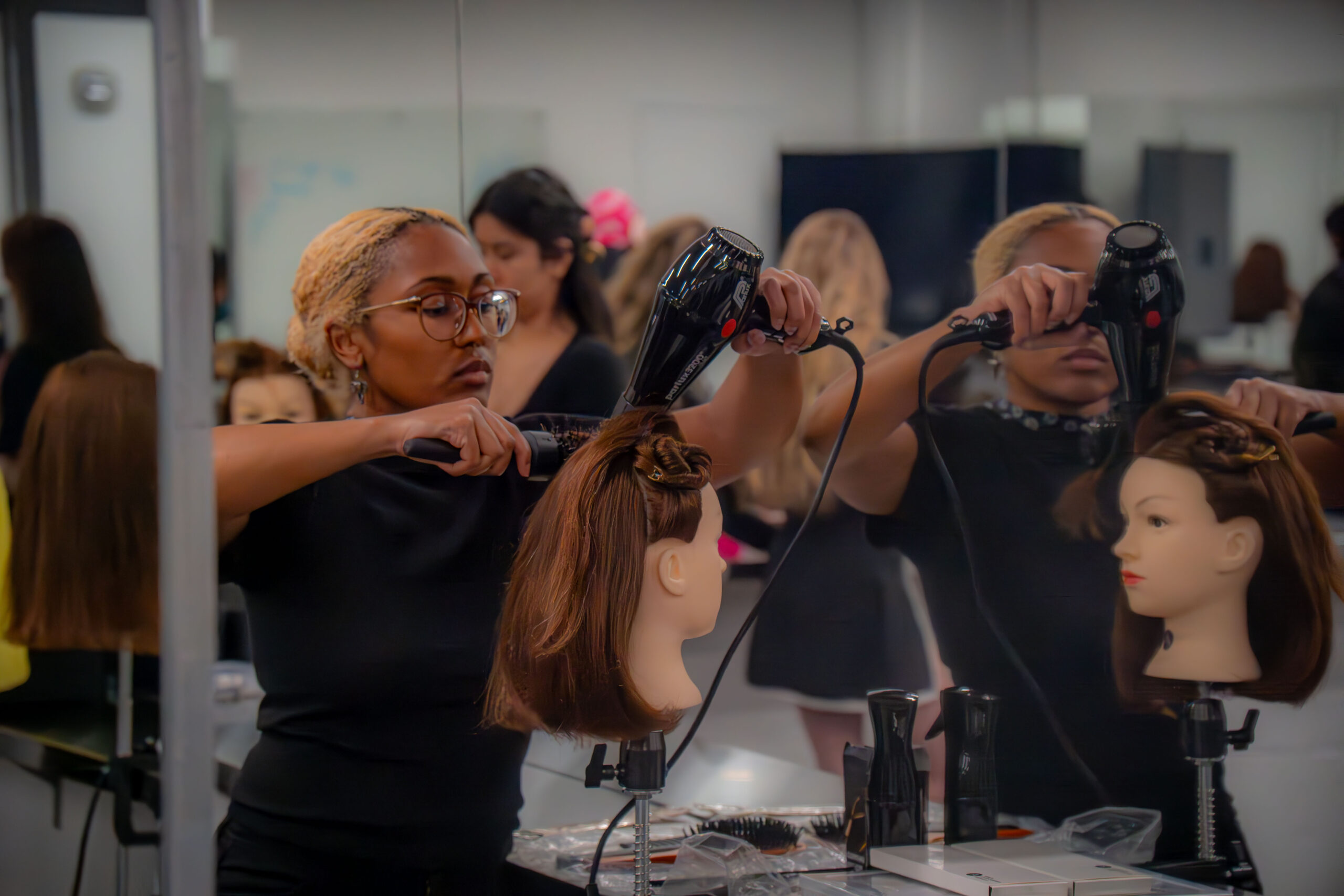(MONTREAL) — While Tazhib is usually found in Middle Eastern countries, one Iranian painter is bringing Islamic art to the Great White North.
Dr. Maryam Nadimi is a 34-year-old woman from Tehran who has established herself as a Tazhib artist in the Montreal area.
“Tazhib is the thing that enlightens my own life,” Dr. Nadimi said. “This art really helps me . . . to be more patient, to be more focused. When I’m doing this art, I’m just enjoying my life.”
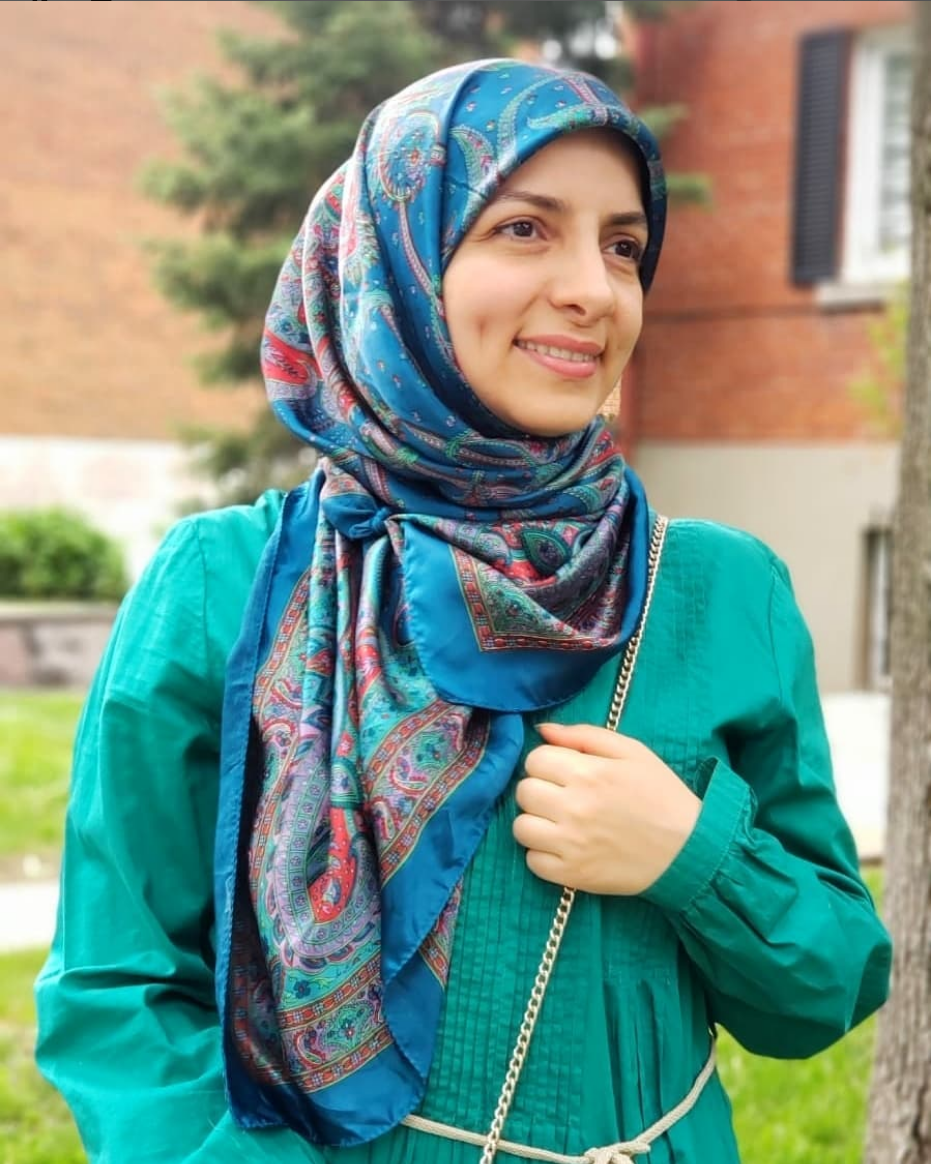
Dr. Nadimi photographed outside of her home and studio in the Montreal municipality of Hampstead. [Credit: Nadimi family]
“Gold is the symbol of light and wisdom in Islamic tradition. This art is trying to enlighten people’s lives [by] using gold,” she said.
Tazhib is Iran’s oldest art form, originally dating back to the Sassanid era in order to decorate religious and poetic texts. But for several decades, the art form has been on the decline, making artists like Dr. Nadimi that much more important to the preservation of Iranian culture.
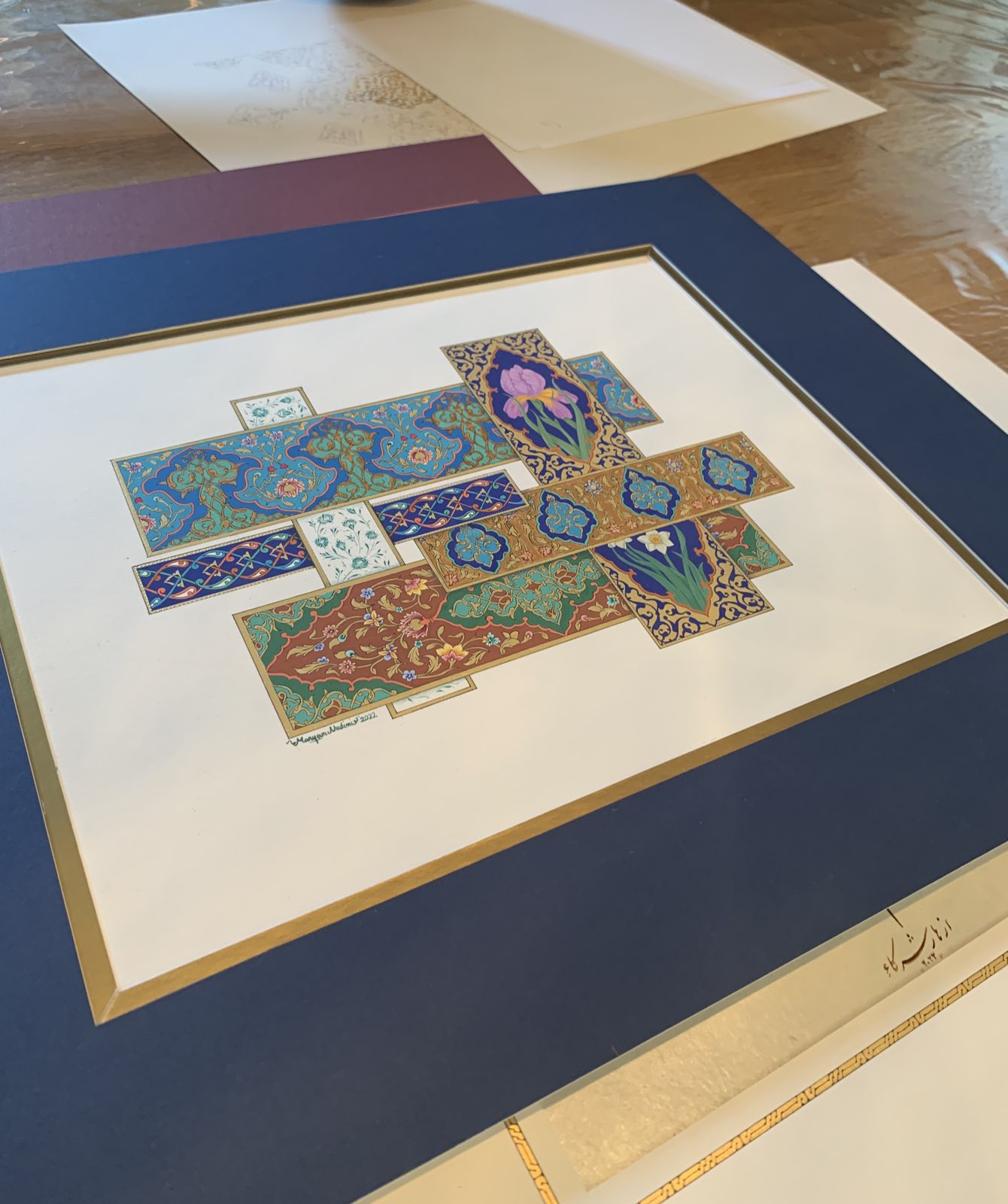
Some of Dr. Nadimi’s unframed masterworks sit in a stack on her kitchen counter. [Credit: Paige Gilmar]
Wanting to share the transcendental artwork of Tazhib to the western world, Dr. Nadimi married her passions for the arts and sciences by offering a unique service to help those with anxiety and depression: Islamic art therapy.
Though not traditionally used in therapeutic practices, Dr. Nadimi states that illustrating Tazhib relies on the synchronicity between body and mind. This exercise often produces a high meditative state in her clients, bringing a similar sense of peace that psychotherapy’s mandala exercises are known for.
“This art is like a meditation because you need to be focused [and] have a steady hand,” she said. “The art detaches [people] from the problems they have.”
“It helps to overcome difficulties like depression. This art makes people more happy about their [lives].”
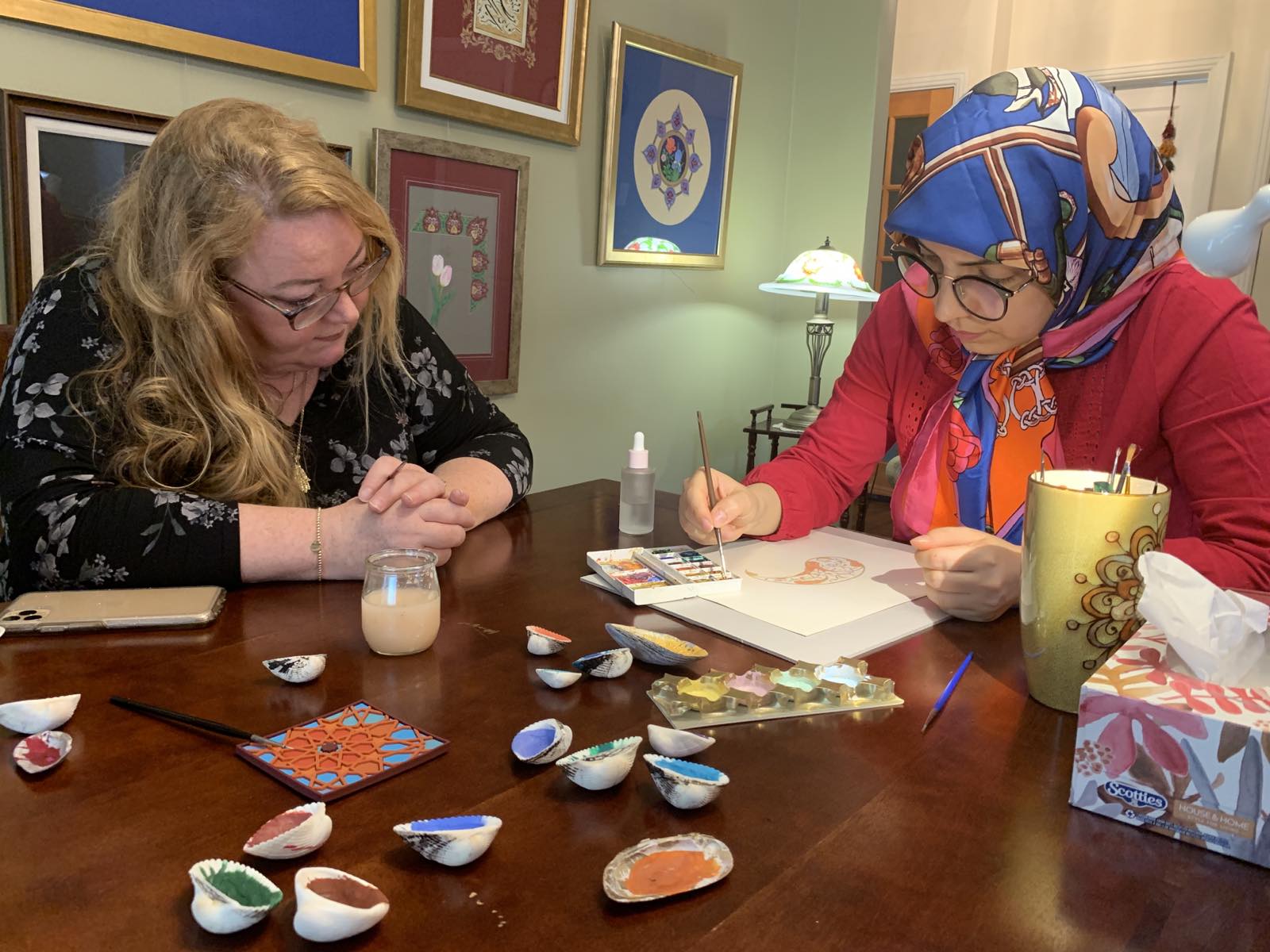
Dr. Nadimi teaches her new student, Caroline, tazhib-style shading. [Credit: Paige Gilmar]
For an hour and a half, Dr. Nadimi’s students can color and shade pre-designed tazhib patterns while experiencing “small Persia” (i.e., Persian music, foods, and drinks).
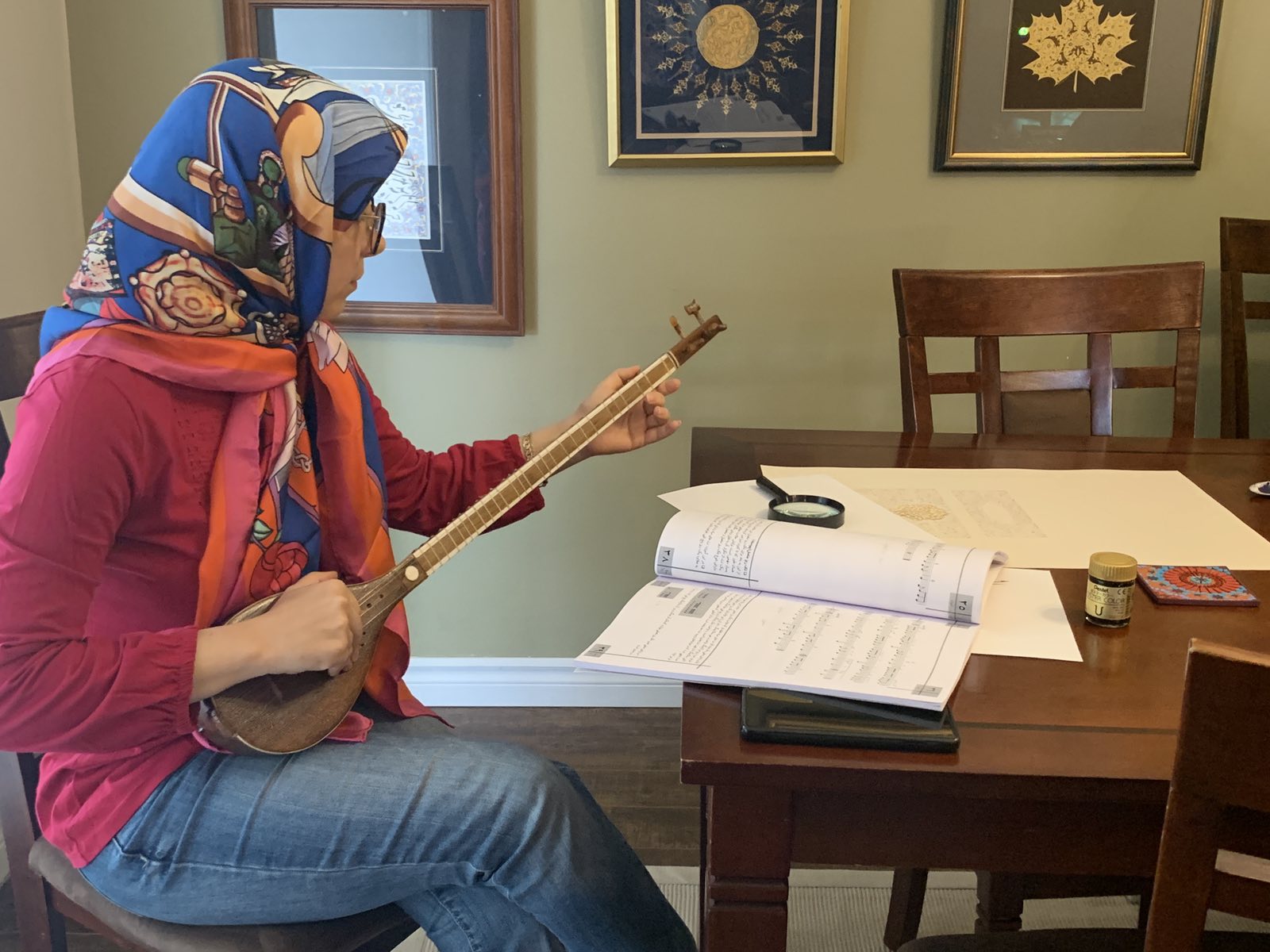
Dr. Nadimi serenades her student with some newly learned songs on the sitar. [Credit: Paige Gilmar]
Dr. Nadimi believes Tazhib is an untapped goldmine for therapeutic practices, and she hopes this ancient art will benefit the health and wellness of Montrealers everywhere today.
